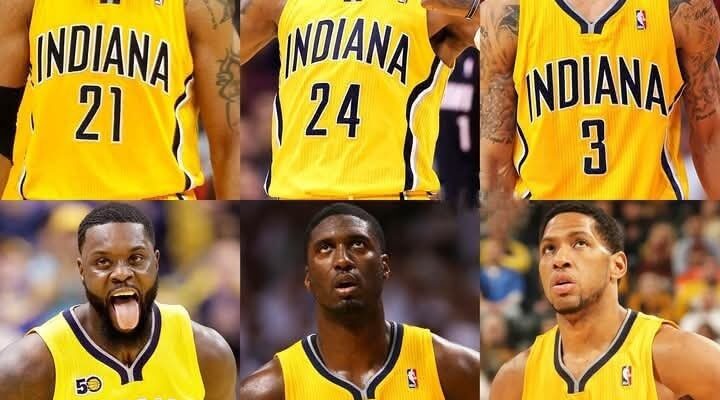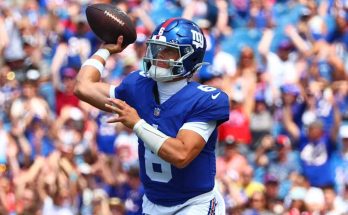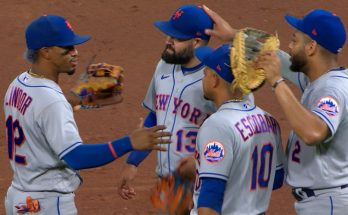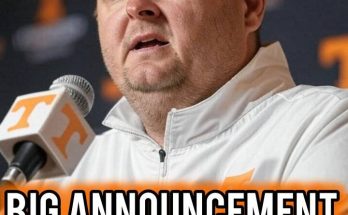The 2010s were a defining decade in NBA history, characterized by the rise of the Miami Heat’s “Big 3” era, which dominated the Eastern Conference from 2010 to 2014. LeBron James, Dwyane Wade, and Chris Bosh formed a superteam that was nearly impossible to stop, capturing four straight NBA Finals appearances and winning two championships (2012 and 2013). However, amidst their dominance, a few teams emerged as legitimate threats to their supremacy in the East. While the Boston Celtics were the first team to truly challenge the Heat’s throne in the early years of the Big 3 era, there was one other team that presented the most significant and sustained threat: the 2013-2014 Indiana Pacers.
The Pacers, led by Paul George and coached by Frank Vogel, made their most significant mark in 2013-2014. They were the one team that consistently provided a real challenge to Miami’s dominance, bringing a combination of defensive tenacity, depth, and size that made them a formidable opponent. Their success that year didn’t just come out of nowhere. It was the result of a multi-year build-up, with the team gradually shaping itself into a serious contender in the Eastern Conference. But in 2013 and 2014, they were the only squad that seemed capable of truly knocking LeBron James and the Heat off their pedestal.
The Pacers’ rise to prominence in the East began in the 2011-2012 season. Though they weren’t considered contenders in the traditional sense, the Pacers showed promise, with a young and hungry roster, strong defense, and an underrated star in Paul George. In 2012, they gave the Miami Heat a legitimate scare in the Eastern Conference Semifinals, taking the series to six games. Despite losing, it was clear that this Pacers team was different from the others that had tried and failed to topple the Heat. They were gritty, resilient, and committed to playing tough, physical basketball. It was a warning sign to the Heat, but it wasn’t until the 2013-2014 season that the Pacers truly became a legitimate threat.
In 2014, the Pacers finished with the best record in the Eastern Conference, a remarkable achievement given the presence of the Miami Heat. They finished the regular season with a 56-26 record, and their success was primarily due to their defense. The Pacers were one of the league’s most ferocious defensive teams, ranking 2nd in defensive efficiency, and their ability to shut down opponents was something the Heat hadn’t encountered in quite the same way during their dominance. The combination of Roy Hibbert’s shot-blocking, Paul George’s perimeter defense, and the overall team commitment to the defensive end made the Pacers a nightmare for any team in the East.
What set the Pacers apart from the other teams that tried to challenge the Heat was their defense. Roy Hibbert, one of the league’s premier shot-blockers and rim protectors, anchored the middle for Indiana. Hibbert was a unique force at 7-foot-2, capable of altering or blocking shots at the rim with ease. The Heat were a team that loved to attack the basket, especially with LeBron James, Dwyane Wade, and Mario Chalmers all being adept at driving. Hibbert’s presence in the paint effectively neutralized much of Miami’s ability to attack the basket as freely as they would against other teams.
Moreover, Paul George emerged as one of the league’s best two-way players during the 2013-2014 season. His combination of length, athleticism, and defensive IQ made him a nightmare matchup for LeBron James. George had the size to contest LeBron’s shots and the speed to keep up with him on the perimeter. In a playoff series, this was crucial. George wasn’t going to stop LeBron, but his ability to limit LeBron’s efficiency was an essential part of the Pacers’ strategy.
The Pacers’ team defense was something that really set them apart. They didn’t just rely on individual defenders like Hibbert or George; they played as a unit. Their ability to close out shooters, trap pick-and-rolls, and communicate on switches gave them a defensive cohesiveness that other teams simply couldn’t match. The Heat, while incredibly skilled offensively, struggled against teams that could disrupt their spacing and make their offense stagnant. The Pacers’ defense, which forced Miami into more contested shots than they were accustomed to, kept games closer than the Heat would have liked.
While the Pacers’ defense was their calling card, their mentality was just as important. The team had a blue-collar mentality that mirrored the work ethic of its coach, Frank Vogel. Vogel had cultivated a system that focused on execution, grit, and tenacity, which perfectly complemented the style of play that the Pacers adopted. They were an extremely physical team, willing to get under the skin of their opponents. The rivalry between the Pacers and Heat was one of the most intense in the NBA during this time, with both teams locking horns year after year.
Miami’s Big 3 were used to being the more talented team in most matchups, but the Pacers made them work for every possession. The Pacers didn’t back down when things got tough; instead, they fought back, bringing an intensity that Miami couldn’t always match. This mindset was particularly evident in the 2013-2014 Eastern Conference Finals, when the Pacers pushed the Heat to seven games. The series was a physical and emotional battle, one in which the Pacers were able to assert themselves as the only team in the East that could consistently challenge Miami’s dominance.
The 2014 Eastern Conference Finals between the Pacers and the Heat is a series that remains one of the most memorable of the Big 3 era. The Pacers, after a grueling and sometimes contentious regular season, entered the playoffs with confidence, and their matchup with the Heat was a clash of two teams that had a lot to prove. LeBron James and the Heat were seeking their fourth consecutive Finals appearance, while the Pacers, led by Paul George, were eager to dethrone the kings of the East.
The series was physical from the outset, with both teams pushing each other to the limit. Game 1 set the tone, with the Pacers stealing home-court advantage in Miami. George was fantastic, showcasing his skills on both ends of the floor, while Hibbert was an imposing presence in the paint. Miami’s offense was forced to work harder than usual, and the Pacers’ defense seemed to have LeBron and company on the ropes.
However, the Heat responded in Game 2 and would go on to win the next three games, despite facing constant pressure from Indiana. The Pacers’ inability to close out games in clutch moments ultimately proved to be their downfall. While they had the defensive schemes to disrupt the Heat’s offense, they lacked the offensive consistency to put the Heat away when it mattered most. Miami’s experience in high-pressure situations, along with LeBron’s ability to take over games in critical moments, was the difference.
Despite the Pacers’ eventual loss, they made it clear that they were the only real threat to Miami in the East. The physicality of the series, the defensive schemes, and the competitive fire shown by the Pacers cemented their status as the team that could give LeBron James and the Heat the most trouble. It wasn’t until the 2015 Cleveland Cavaliers, led by a more mature LeBron James and a team built around his strengths, that the Pacers’ window of opportunity truly closed.
While the Pacers were undoubtedly the most consistent and serious challenge to the Heat during the Big 3 era, it would be remiss not to mention the 2012 Boston Celtics. Though the Celtics were aging and had been through multiple battles with LeBron’s teams in the past, their 2012 playoff run brought out the best in them. The Celtics, led by Paul Pierce, Kevin Garnett, and Ray Allen, had one last shot at glory before their window closed for good. They gave LeBron and the Heat a run for their money in the 2012 Eastern Conference Finals, with Rajon Rondo playing some of the best basketball of his career.
In that series, the Celtics pushed the Heat to seven games, with Rondo’s brilliance, Garnett’s defense, and Pierce’s scoring keeping them competitive. However, Miami ultimately prevailed, with LeBron James showing why he was the best player in the world, leading the Heat to a narrow Game 7 victory. Still, the Celtics’ 2012 near-miss was a reminder that Miami wasn’t invincible, and the Pacers were able to take that lesson and improve upon it in the following years.
During the Big 3 era in Miami, the 2013-2014 Indiana Pacers were the most legitimate and sustained threat to LeBron James and the Miami Heat in the Eastern Conference. While the Celtics gave Miami a run for their money in 2012, it was the Pacers’ defensive prowess, physicality, and the emergence of Paul George as a two-way star that made them the team that could have, if circumstances had aligned just a little differently, dethroned the Heat. In the end, the Pacers may not have been able to fully knock off Miami, but they were the only team to consistently challenge the Heat’s dominance, and for that, they will always be remembered as one of the few squads to truly push LeBron James to his limits in the Eastern Conference.



